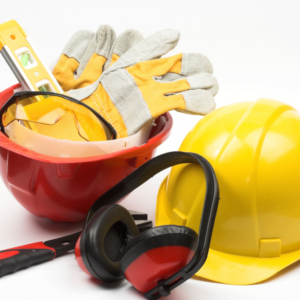Hand injuries are a common risk in various industrial and occupational environments. To protect workers from cuts and lacerations, cut-resistant gloves have become essential personal protective equipment. Last Friday, we discussed “Four Common Types of Cut-Resistant Gloves”, and we’ll share two cut-resistant gloves standards and their level classifications today. EN388 and ANSI/ISEA 105 standards are widely accepted standards in the industry used to assess the performance of cut-resistant gloves. These standards provide a unified set of guidelines to ensure accurate evaluation and identification of the cut resistance of gloves.

1. European Standard (EN Standards):
The European standard, EN 388, has been established specifically for cut-resistant gloves. This standard assesses gloves based on their performance in cut resistance, abrasion resistance, tear resistance, and puncture resistance. Among these, cut resistance is the most critical indicator. According to EN 388, cut resistance is divided into five levels, denoted by the letters A to F. Level A provides the lowest level of cut resistance, while level F offers the highest level.
| Level | Cut Resistance | Coup Test Index | Grams of Force |
| A | Lowest | 1.2-2.5 | < 20 |
| B | Low | 2.6-5.0 | < 30 |
| C | Moderate | 5.1-10.0 | < 40 |
| D | High | 10.1-20.0 | < 60 |
| F | Highest | > 20.0 | > 60 |
Please note that these values are provided as examples, and the actual cut resistance levels and corresponding indicators may vary depending on different gloves and manufacturers. Additionally, specific data needs to be determined through laboratory testing and assessment by certification bodies. Therefore, when selecting cut-resistant gloves, it is recommended to refer to the data and certification reports provided by the relevant manufacturers to ensure compliance with requirements and meet the specific needs of the working environment.
It’s important to note that Level E is not included in the EN 388 standard. The standard jumps from Level D to Level F to accommodate the increasing demand for higher levels of cut resistance.

In addition to cut resistance, EN 388 evaluates gloves for abrasion resistance, tear resistance, and puncture resistance, assigning numerical values to each category. The higher the numerical value, the better the performance. For example, abrasion resistance ranges from 1 to 4, tear resistance ranges from 1 to 4, and puncture resistance ranges from 1 to 4. This comprehensive assessment provides insights into the glove’s performance in different aspects. The above picture is an example.
2. American Standard (ANSI Standards):
The American standard, ANSI/ISEA 105, focuses primarily on the cut resistance of gloves. Unlike the European standard, the ANSI standard utilizes a cut level and grams of force to evaluate cut resistance. The cut level indicates the glove’s performance in cut tests, with higher numbers representing higher cut resistance. The grams of force measures the amount of force required to cut through the glove material.

In ANSI/ISEA 105, the cut level is classified from A1 to A9. A1 represents the lowest level of cut resistance, while A9 signifies the highest level. The range of grams of force corresponds to the cut level, and the standard provides an associated table to determine the cut level and grams of force based on the glove’s performance in cut tests.
The EN388 and ANSI/ISEA 105 standards specify the methods and procedures for testing cut resistance. These include laboratory testing, sample preparation, data collection, and evaluation processes to ensure that gloves meet the respective standard requirements.

Importance of Level Classifications:
The level classifications serve as a guide for users in selecting suitable cut-resistant gloves. Gloves with appropriate cut resistance levels can be chosen depending on different work environments and task requirements. This helps effectively reduce the risk of hand injuries and provides a safer working environment.


